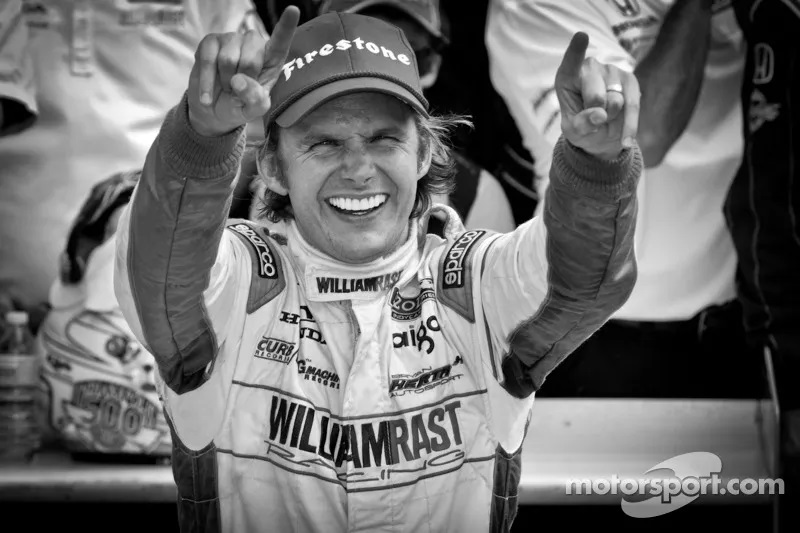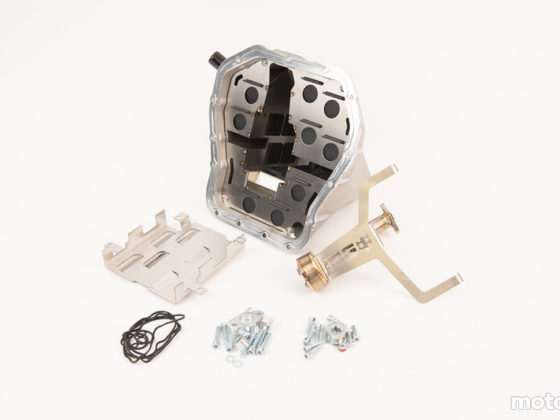The rest of the IndyCar paddock moved on, first to Texas for the first double header race in 30 years. Power and Franchitti continued their duel with each driver taking a win in Texas. Franchitti would take the advantage in Milwaukee. Power would fight back, but a steady stream of bad pit stops dropped him back in multiple races. The next big lowlight of the season was at Loudon, IndyCar’s first visit to the 1 mile oval in New Hampshire since 1998. First, Tony Kanaan knocked over a porta potty with his crashing car and nobody at ABC thought to make a Code Brown joke. Then, with just a handful of laps to go, rain began to fall and rather than halt the race, IndyCar threw the green flag. A massive pileup ensued taking out a number of cars including Power. Will showed his displeasure with the stewards on live TV. The series eventually rolled the race results back to before the crash, but it was a monumental embarrassment. Power won the next two races in Sonoma and Baltimore (a race attended by yours truly since I only lived an hour away). Needing a change of taste, IndyCar flew to Japan to run their final race at Twin Ring Motegi. Normally, Indy would have run on the oval, but after the Fukushima Earthquake in March, the oval was too damaged to use and IndyCar instead bid farewell on the road course.

The penultimate race of the season was held in Kentucky where Ed Carpenter, after nearly a decade of trying, finally scored his first IndyCar win. He was an emotional, but happy man, finally achieving victory after so many years of trying and coming up short. Also competing in that race was Wheldon, driving for Sam Schmidt. See, as part of his plan to re-engage sports fans, Randy Bernard offered a $5 million bonus to any non-IndyCar driver who could win the season-ending Las Vegas race if they started from the back of the field. That bonus would be split with a randomly selected fan. This idea originated from dirt track racing where a moderate bonus is offered to the pole sitter if he or she decides to give up the pole and try to win from the back. Wheldon accepted the challenge and Schmidt put up the car. The pair decided to use Kentucky as a test session since Kentucky and Las Vegas are nearly identical in layout.

The Finale
Anticipation for the season finale was high. This would be Danica Patrick’s final race as an IndyCar driver; in 2012 she would defect to NASCAR racing for Tony Stewart, leaving a gaping hole in IndyCar’s marketing. Not only was Danica one of IndyCar’s most recognizable names, she was carrying the lucrative GoDaddy sponsorship. Teams had pulled out every old Dallara car they could find to make up the field for this massive finale. And of course there was the championship: Franchitti held an 18 point lead over Power, which was not a comfortable margin. A win is worth 50 points and IndyCar offered bonus points for leading the most laps (2), and pole position (2). Power would have to beat Franchitti on the track, but Franchitti would still need to have a good day in order to take home the championship.

A total of 34 cars entered the race, all invited by Randy Bernard to compete for a large purse. Neither Power nor Franchitti would get the bonus points for Pole as Tony Kanaan would take that prize. In fact Power and Franchitti did rather poorly, qualifying 17th and 18th respectively. Most drivers were nervous about the race: 1.5 mile NASCAR tracks typically create pack racing in IndyCar. Las Vegas in particular was so grippy that the cars were always running at full throttle even when trimmed out to their minimum. The cars were so well matched that the qualifying spread from first to last was 0.5 seconds.
On top of the on-track concerns, the pit road experience would be very difficult. 34 cars on pit road would be very crowded. A large number of the pit crews were rusty, only brought out for Indy and the season finale. IndyCar had seen quite a few pit incidents in 2011 (the Kentucky race alone had three separate pit incidents, with multiple crew men getting clipped by cars), so even the pit lane had the potential for danger. The atmosphere was exciting for fans, all expecting an electric race with lots of action. The adrenaline from the pitlane was charged less with excitement and more with anxiety about surviving all 200 laps.




4 comments
Never thought I’d see an article on Dan here but pleasantly surprised. Great article.
Thank you! This was a major pet project for me and I am glad it is appreciated.
Great article, not a fan a Indy and at that time I had no idea of who DW was, but after reading this I have a very clear idea of what a larger than life character and his overall impact in the series.
Dan was really something else. Thanks for the kind words, I am really glad people enjoyed this article.